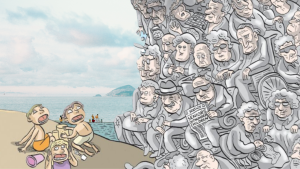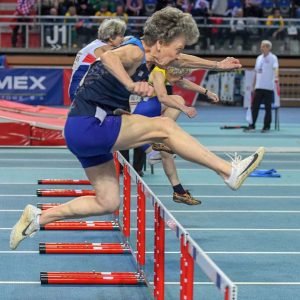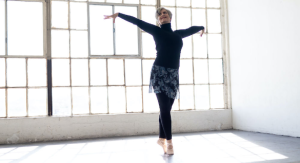6
Section One: The Fundamentals
A) Keywords
Exercise 1:
Provide a brief definition of one of the padlet keywords for this week.
| Equity:
I work in childcare and often I give this lesson on equity to my children: “Imagine your friend has a cut and I need to give them a bandaid. After I give your friend the bandaid you break your arm and say “Ouch! I need a bandaid!” Would I give you a bandaid?” The kids usually ponder for a split second but then tell me that a bandaid for a broken arm is silly because it’s a different type of injury and heals differently. I then say, “ but that’s not fair, I gave one of you a bandaid, so I have to give both of you one, right?” They laugh and say no. This brings up a discussion on equity and fairness in the ways people are treated. Equity means providing individuals with the resources and opportunities needed for THEM to succeed like another person but on the basis of their specific circumstances, rather than treating everyone on the same terms. This lesson in equity demonstrates to them that sometimes people will get different things to make things equal. They have the same “box” picture in their schools so it helps to refer to this picture as well when explaining equity. Equity in relation to age means ensuring that people of different ages have fair access to opportunities, resources, and support systems. This could involve policies that protect older people in sports, older workers from age discrimination, or providing additional educational support for younger individuals who may lack experience. Equity in relation to age acknowledges that different age groups have different and specific needs/challenges that require fairness to help those ages succeed according to those needs.
|
B) The Social Significance of Aging in Sport
Exercise 2: Notebook Prompt
How is old age popularly represented today? Find an image online that you think exemplifies one defining attitude towards old age and paste in your notebook below with a brief explanation of what this image means to you.

I chose a picture to represent the metaphor of the “silver tsunami” which represents the rapid aging population, especially in Canada where the birth rate is declining but life expectancy is increasing. This image portrays the growing number of older adults as a “massive wave” approaching society, and this narrative implies a crisis or overwhelming burden on various systems like healthcare, social security, and the workforce. This attitude I feel represents how old age is represented today, reflecting both concern and fear. This view of aging as a challenge and as a strain on resources rather than as a natural and valuable stage of life is very harmful. While I do think the metaphor does highlight real demo graphic shifts, it simultaneously reinforces negative stereotypes and suggests the older adults are a problem rather than contributors to society, just in a different way than neoliberal, capitalist, ideals.
|
Exercise 3: Notebook Prompt
What does the article (referencing another study by Dionigi) mean by its statement that sport can help aging people to simultaneously “accept and resist the ageing process” (572)? Respond by audio or text and find paste two images sourced online into your notebook showing how sport might help aging people to both accept and resist the aging process.
| The article’s reference to the statement that sport can help aging people to simultaneously “accept and resist the ageing process” (572) means that engaging in physical activity and expression allows older individuals to acknowledge the natural decline in physical abilities while still maintaining a sense of autonomy, competence, and control over their own bodies. I feel that by participating in sports, older adults can accept the physical changes that come with aging but in doing so they learn to adapt and therefore resist the negative stereotypes of fragility and demonstrate resilience, defying the expectations of decline in aging. Upon doing some research, I found two aging athletes that are incredible and both accept and resist the aging process. The first athlete I found is Florence Meiler, an American athlete who specializes in track and field events. Florence is 90 years old and became a standout competitor in her 70’s and 80’s. She has set multiple world records in the 60m, 100m, and 200m sprints or her age group. Despite starting the sport in her later life she rose to the challenge and has been inspiring so many with her determination and success. Florence shows how sport can help aging people to both accept and resist the aging process through her continued success well into her 90’s. She accepts the natural physical challenges that come with aging such as her gradual decline in speed and strength. However, she resists stereotypes of frailty by still competitions at high levels and setting world records. Her participation shows that aging doesn’t equate to inactivity or lack of ability, she is still able to do what she loves no matter her age. She challenges the notion that older adults need to avoid vigorous activity and for that I commend her. Another older athlete who I have loved for years now is Kim Hale. Kim is young in my eyes but for the world of dance she is considered “old” at 57. Kim demonstrates how older adults can continue to pursue their passions, like dance. I grew up dancing and she inspires me to continue into my old age. Her commitment to dancing exemplifies how individuals can resist societal expectations of slowing down or giving up physical passions as they age. By dancing, she shows that age is not a limiting factor when it comes to maintaining vitality, creativity, and physical health. In face, I think she shows that sport can be beneficial in old age as a tool for movement and fluidity.
|
Exercise 4: Notebook Prompt
Who are the groups less likely to have extensive opportunities to take part in sports, according to Pike? How does privilege factor into aging and sport? (200 words max)
| According to Pike (2015), the groups less likely to have extensive opportunities to take part in sports can include people with disabilities, the very frail, some minority ethnic groups, those who are confined to care facilities, and those who live in rural areas. Privilege plays a big role in aging and sport as it influences access to economic and cultural capital which impacts opportunities to physical activity, much of which is extremely expensive to participate in. Those with fewer resources or social support, such as the groups listed above, are far more likely to experience limitations in their ability and practicality in playing sports. Additionally, gender with a “feminization of aging” (Pike, 2015), further compounds these unique challenges, as women often face more barriers that are significant as they hinder physical activity due to caregiving roles and societal gendered expectations.
|
Exercise 5: Padlet Discussion
Why do you think age discrimination is “reported more than any form of prejudice” with older people presented as a threat to social values and interests? Feel welcome to use video in your responses. Paste your comments (or transcript of your video) below!
| I think that age discrimination is often reported far more than other forms of prejudice simply because it is a universal experience – aging happens to everyone regardless of race, gender, or class, everyone will grow older. I also think that modern societies are driven by neoliberalism prioritizes by capitalism and productivity which also devalues older individuals and increases negativity surrounding the older population. The perception that older people are a “threat” to social values and interests, as referenced in my image regarding the “silver tsunami”, comes from a plethora of factors. Older populations are seen as dependent on social services and severed from the chain of productivity that occurs within the workforce. As people age, their social roles therefore shift. They may retire, lose social visibility, and experience reduced influence in decision-making spaces, this loss of “power” can lead to marginalization. Additionally, their lack of involvement in the workforce can lead to resentment, particularly in places that privilege economic productivity. Moreover, western societal culture emphasize youth, beauty, and physical ability. The elders then are often considered out of touch, fragile, or even a hindering factor in societal progress. Lastly, I think society often avoids confronting the idea of aging and what inevitably comes with it; death. Therefore, I think to some, older individuals serve as a visible reminder of these inevitabilities and so younger folk distance themselves from it, reinforcing discrimination and exclusion.
|
B) Older Women and Sport
Exercise 6: Notebook Prompt
What differences do you see in these ads? Which one is more inclusive? How is age represented or not represented in each? Answer these questions in your notebook.
| Upon my first watch of both ads, I really appreciated the inclusivity of different body types and age in the second ad, This Girl Can – Me Again. I noticed the inclusivity of age in this ad primarily because of the module topic. This ad specifically also highlighted the trials and triumphs of being a woman in sport going through menstrual changes and in doing so it helped normalize a topic that is often considered taboo and opened up a space for conversation. In contrast, in the first ad, Nike, You Can’t Stop Us, I loved seeing the similarities between various sports it helped evoke a feeling of community and connectedness. I loved seeing various abilities, ethnicities, religions, races, genders, but I did not see any older individual being included within the message which was the biggest difference between the two videos for me. While some may argue that the Nike ad is more inclusive in terms of gender diversity compared to the This Girl Can ad, i would suggest that the video was made to focus on women, reflected in the title, and shapes its message differently but in an equally important way. Each ad brings a different message and type of inclusivity to the table, but in terms of age representation, This Girl Can stands out.
|
Exercise 7: Notebook Prompt
In her article, “Assessing the sociology of sport: On age and ability,” Elizabeth Pike references a “trend towards a ‘feminisation of ageing’, with many women living longer than men” (573). Do you agree that aging has been “feminized” in this way? How? Answer these questions in your notebook.
| 100% yes, I agree with Elizabeth Pike and her reference toward a trend in a ‘feminization of ageing’. Statistically, women tend to live longer than men which means the greater portion of the ageing population are women (Pike, 2015). This demographically shapes how ageing is represented and experienced. However, this feminization is not just about numbers, it is about how aging is gendered in cultural and societal expectations. These expectations limit access to physical activity and reinforce narrow ideas of what aging “Should” look like. When I think about this, I think about my Oma. She grew up during world was 2 and had to quit school to care for her siblings after her father died. Her mother needed help, and like many girls at the time, she was expected to step into that caregiving role without question. That early experience shaped the rest of her life – she was always looking after someone else, whether it was her own children, grandchildren, extended family, or friends. Physical activity or leisure often was not a consideration for her because she constantly prioritized everyone else, but she loved doing so She loved that she built her own family and had the ability to take care of them. Luckily, she was not doing it all alone like many other women, she met my Pa and he is a saint of a man who helped her through it all. However, she still never got to finish school or complete things she may have dreamed of completing. This is why I am doing what I am doing. As I write this it is my last day of undergrad. My Oma loved learning and education and I think she would have made a great teacher had she had the opportunity. As I wrap up my time here at Trent University and go on to teach abroad in Thailand, then hopefully to teachers college, I am keeping her close to my heart. I am graduating in honour of her, because of her, and for her. Even as she aged, and other women age, these societal expectations of caregiving did not disappear. Pike’s point about the ‘feminization of aging’ helps me appreciate the sacrifices of so many women for the sake of others well-being. Moreover, for women aging is seen as something to resist or hide as they are bombarded throughout their life with messages of youthfulness equating to value, beauty, and worth. Women are expected to remain youthful looking for as long as possible, which fuels entire industries focused on anti-aging: creams, surgeries, hair dye, fitness routines, and more. This puts pressure on older women to manage their appearance in ways that men rarely are expected to . Wrinkles, grey hair, and natural signs of aging are often seen as flaws in women but signs of wisdom for men. This double standard reinforces the idea the women’s primary value is in how they look and act, and that their worth decreases as they age. Because of this, physical activity for women is often framed not in terms of enjoyment or empowerment and fun but as a way to slim down, maintain beauty, or delay decline. This fits into what Pike critiques as a neoliberal, anti-aging agenda. In this way, the feminization of aging is deeply tied into the beauty culture as well. It creates unrealistic expectations and contributes to feelings of invisibility and unworthiness among older women. |
Section Three: Module Mini Assignment
| The great pickleball debacle centres around the conflict between older adult pickleball players and the city of Peterborough, Ontario. Pickleball is a growing sport that is particularly played and enjoyed by older adults and has specifically gained popularity because of its low impact nature, accessibility, and the social aspects that come with playing it. In the city, there has been growing debate and contention over the allocation of the public space they are choosing to put these pickleball courts in, as well as concerns over the noise of the game. Residents near the planned courts have filed complaints and protested with “Save Bonnerworth Park” signs, indicating their upset with noise pollution and overuse of the park space which has led the city to limit court access and suspend construction plans on the court. The same issues have arose in various places across the country, specifically I found a news article very similar to Elaine Anselmi’s article that focuses on these issues in Halifax. Author Haley Ryan depicts how noise complaints from the pickleball courts have led to public debates about the closure of repurposing of the courts. In Peterborough, the controversy surrounds around the building of the courts without proper community discussion. In Halifax, the Castle Hill Park pickleball courts faced closure because of its proximity to residence and their annoyance with the noise, some of whom described it as “psychological torture”. While municipalities have attempted mitigations like foam balls and limited hours, these mitigations fail to satisfy either party involved. The Halifax’s location even had players acknowledging the site’s shortcomings but expressing disappointment over a lack of adequate alternatives and a damper on their enjoyment. Toronto presents a different angle, while the sport’s growth is celebrated and seen as a both a tool for active aging and community development, Author Ghana Alsharif states that the players in Toronto struggle to find enough space to play. In this article, they explain that the city is exploring solutions like using hockey dry pads in the summer, yet even there, debates over noise and shared court spaces with tennis players have created conflict. Across all three cases, a common theme emerges: a lack of proactive, inclusive planning has turned something joyful and engaging into a battleground between generations, homeowners and players, and competing recreational passions. In the daily media I have consumed, particularly on Facebook and Instagram platforms, the discussion and representation of older pickleball athletes is very ageist and I do not think everyone is looking at the sport in the same light. The discourse reveals a neoliberal ideology that framer older adults in sports as intruders, disruptive, and unaccomadatable. Their joy, movement, and social connection is overlooked and even vilified. This to me aligns with Pike’s (2015) idea of neoliberal aging which defines aging bodies as acceptable only if they are silent, private, and. Non-disruptive to capitalist rhythms of productivity and property value. Ageism also appears in the way that this sport is considered a fad or unworthy of real investment like the baseball field adjacent to where there courts will be. Even while older adults are praised and encouraged to participate in physical activity, they are expected to do so quietly and without imposing on the public. These older adults barely have spaces to participate in sport, so i feel these courts could provide them with a sense of support and community. Toronto’s solution of sharing spaces and structuring scheduling gestures toward a more inclusive possibility, but systemic change is needed to recognize older adults playing sports as burdensome but as active and deserving athletes.
sources: |
| https://www.cbc.ca/news/canada/nova-scotia/halifax-likely-to-close-tremendously-tormenting-pickleball-court-after-years-of-noise-complaints-1.7409271
https://www.thestar.com/news/gta/pickleball-s-soaring-popularity-has-created-quite-a-racket-toronto-is-scrambling-to-find-space/article_203136ec-104f-5072-8616-0d8595eead1c.html |

 Florence
Florence Kim
Kim